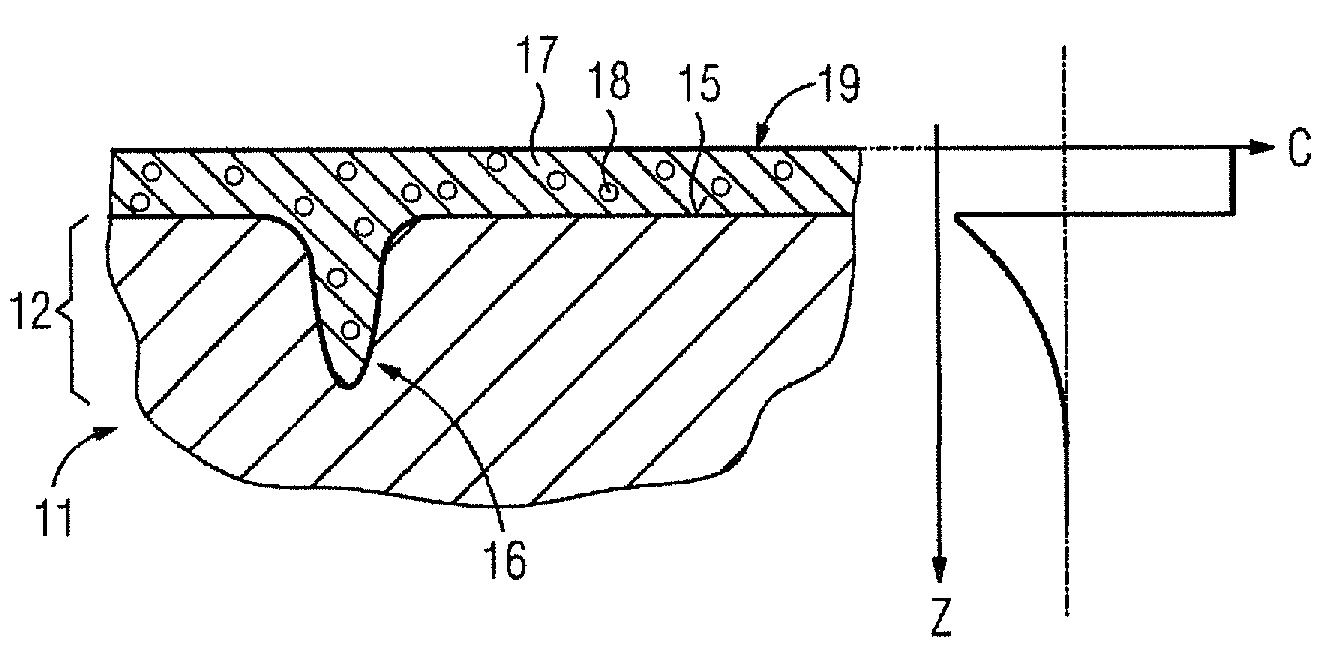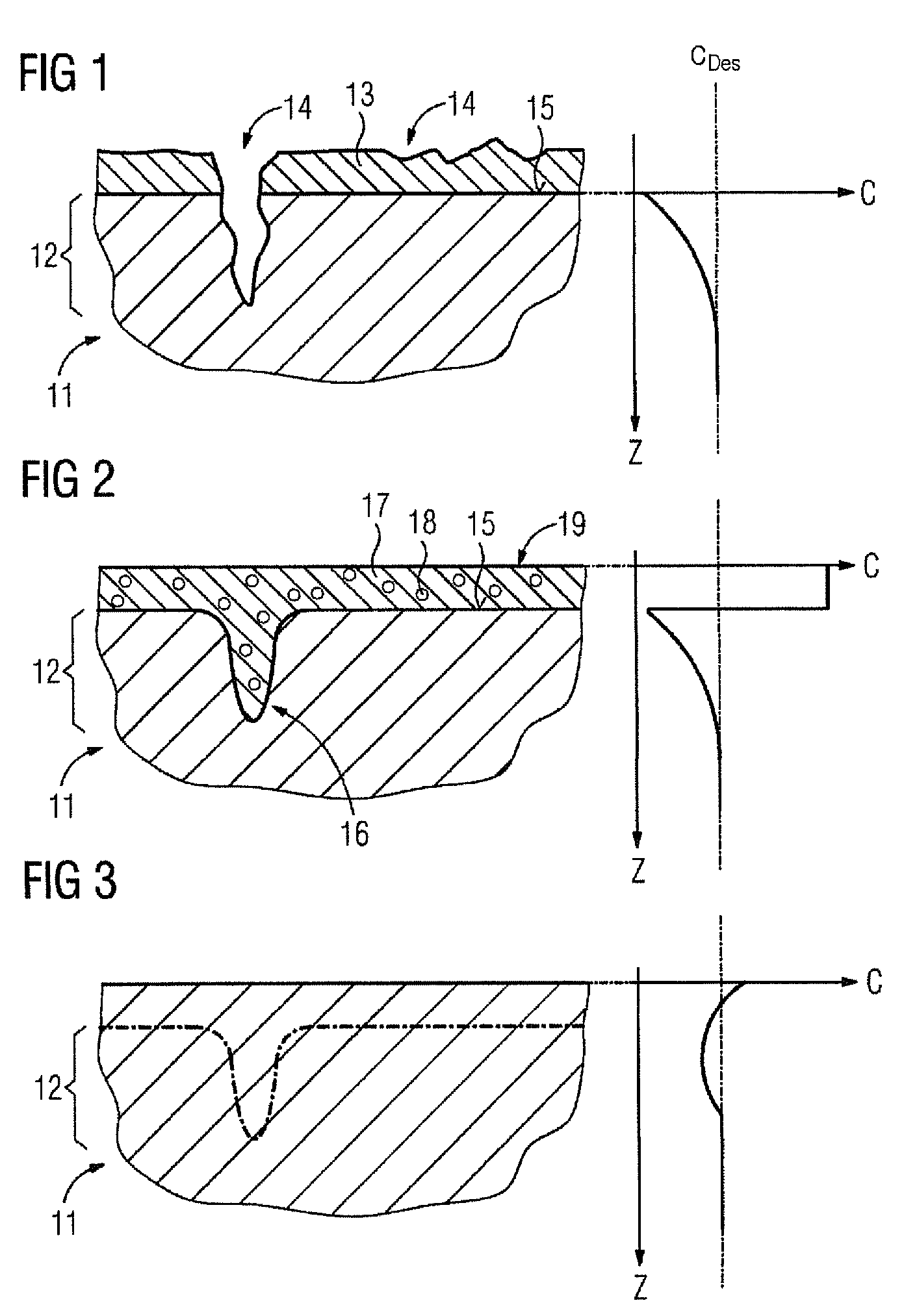Method for repairing a component by coating
a technology for coating and components, applied in mechanical equipment, machines/engines, turbines, etc., can solve the problems of premature degradation of sensitive layer materials, increased cost of cold spraying, and inability to detect wear phenomena initially invisible, so as to shorten heat treatment times and improve monitoring
- Summary
- Abstract
- Description
- Claims
- Application Information
AI Technical Summary
Benefits of technology
Problems solved by technology
Method used
Image
Examples
Embodiment Construction
[0022]A component 11 as shown in FIG. 1 is a turbine blade formed by an MCrAlY alloy. The figure shows a region 12 near the surface of the turbine blade which has a coating 13. By way of example, this may consist of a thermal barrier coating (TBC), this layer serving to thermally protect the turbine blade. The region 12 near the surface of the component 11 can itself represent a layer on a base body (not shown in more detail), it also being possible to produce the blade in solid form from the MCrAlY alloy.
[0023]FIG. 1 also shows damaged locations 14 which may consist, for example, in abrasive wear on the surface or a crack. In addition, a graph which is true to scale with respect to the illustration of the component 11 plots the concentration of a specific microstructural proportion C against a path coordinate z which indicates the distance to the surface 15 of the uncoated component 11. By way of example, the specific microstructural proportion may be the aluminum content of the MC...
PUM
| Property | Measurement | Unit |
|---|---|---|
| melting point | aaaaa | aaaaa |
| temperatures | aaaaa | aaaaa |
| temperatures | aaaaa | aaaaa |
Abstract
Description
Claims
Application Information
 Login to View More
Login to View More - R&D
- Intellectual Property
- Life Sciences
- Materials
- Tech Scout
- Unparalleled Data Quality
- Higher Quality Content
- 60% Fewer Hallucinations
Browse by: Latest US Patents, China's latest patents, Technical Efficacy Thesaurus, Application Domain, Technology Topic, Popular Technical Reports.
© 2025 PatSnap. All rights reserved.Legal|Privacy policy|Modern Slavery Act Transparency Statement|Sitemap|About US| Contact US: help@patsnap.com


